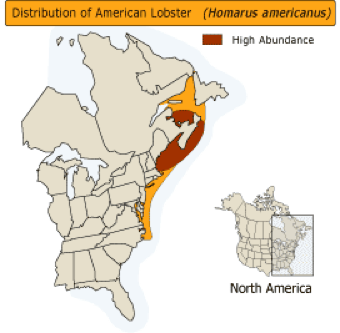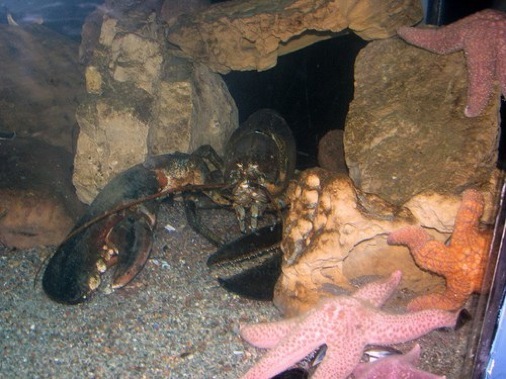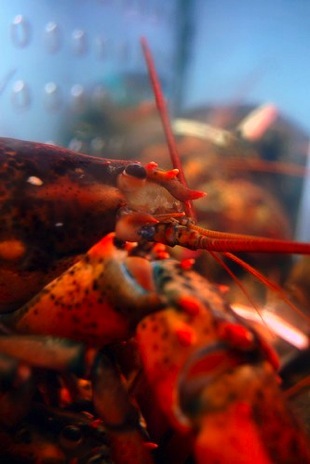
Where You At?



Figure courtesy of Richard Larocque, Fisheries and Oceans Canada; François Hazel, Fisheries and Oceans Canada
Newly hatched lobsters are free-swimming larvae and tend to concentrate in surface waters which creates retention areas for their food sources. Young, relatively immobile lobsters stay generally close to the coasts at depths of less than ten meters and are found hiding in the company of sea weeds or in rocky habitats where food and protection against predators, waves, and currents are always provided. They may burrow in pebble, sand or clay during the winter months. Adolescent and adult lobsters typically find shelter on rock or gravel covered with algae, salt-marsh peat, eelgrass, seaweed substrates, and firm mud. Here they can build and maintain a burrow that will shelter them from predation. Adolescent lobsters typically reside in coastal and offshore habitats and rarely exhibit migratory behavior. The largest adult lobsters have the capability to live in deeper waters, typically around 50 meters, but prefer to migrate toward the coast in the summer where the water is warmer; however, in the winter, they migrate to open water with hopes of escaping the turbulence of the coastal waters and can remain in their burrows for weeks at a time because the water temperatures can be below 5°C. Adolescent and adult lobsters typically find shelter on rock or gravel covered with algae, salt-marsh peat, eelgrass, seaweed substrates, and firm mud. Here they can build and maintain a burrow that will shelter them from predation.
Water temperature is a significant contributor to adolescent and adult lobster growth, survival and reproduction. Adult lobsters exposed to temperatures above 20°C exhibit symptoms of respiratory stress and compromised immune response; however, additional factors related to water temperature that greatly impact lobsters are dissolved oxygen and salinity levels. Adolescent and adult lobsters are sensitive to low dissolved oxygen levels when they prepare to molt.
As far as catching these creatures, about 62% of lobster landings are in Canada and 38% in the U.S, 62% of which are located in Maine, hence the nickname “Maine Lobster.”



